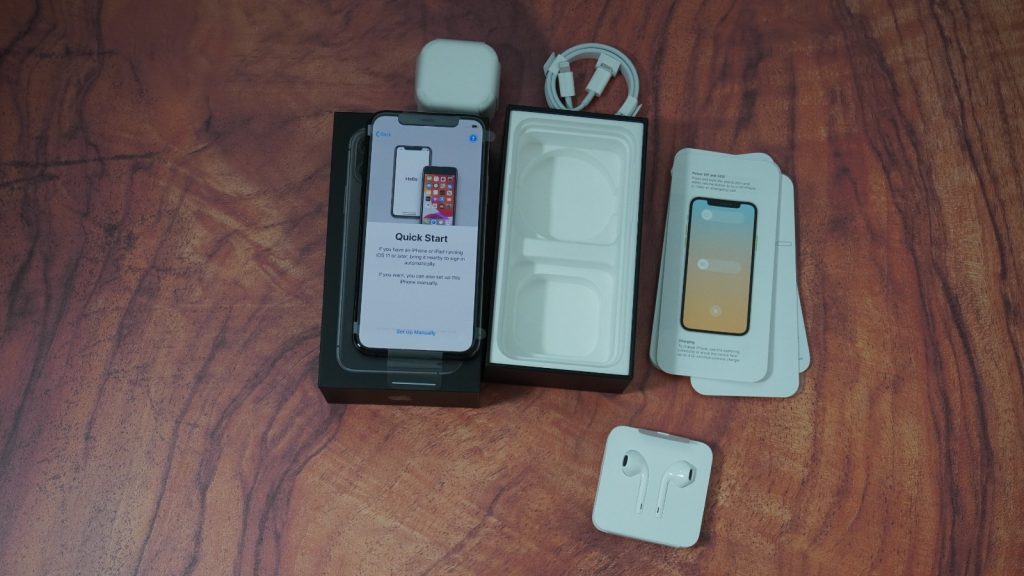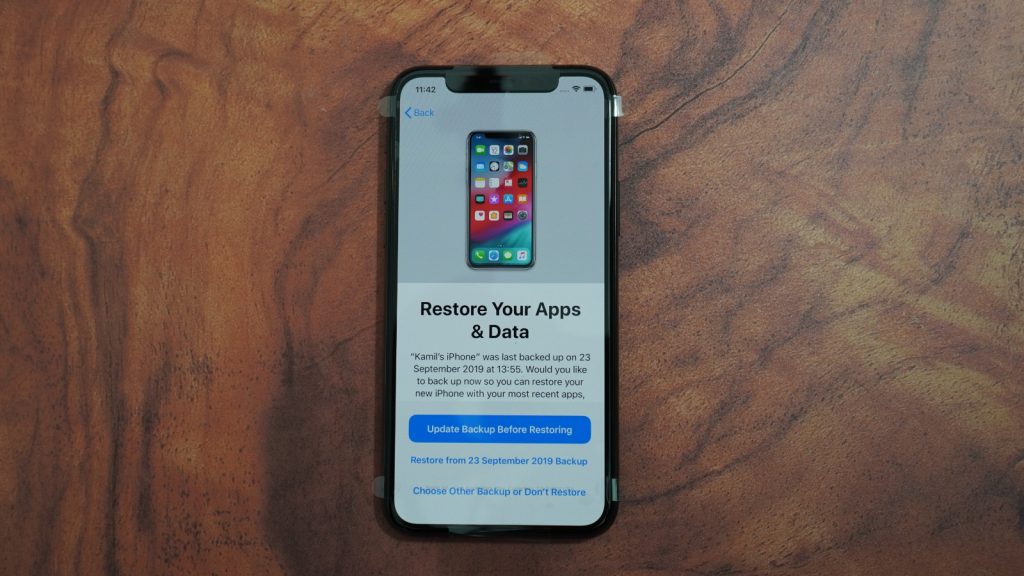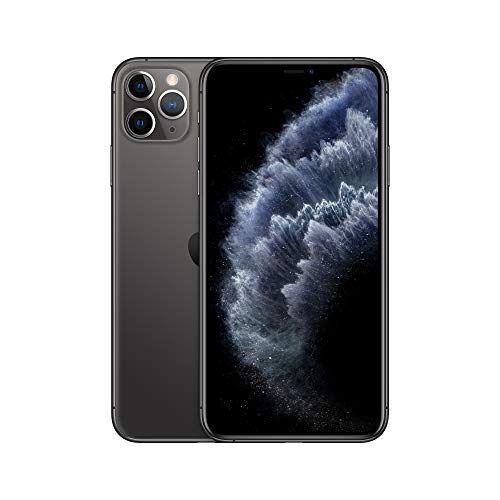Apple iPhone 11 Pro Hands-on Review
The Cupertino giant recently took the stage to unveil the much-awaited iPhone 11 lineup phones. This year once again Apple unveiled three new iPhones attracting a different niche of buyers. Apple once again back to the numeric model number with the new-gen phones. The iPhone XR is succeeded by a new 6.1-inches iPhone 11. This year we have two new Pro models succeeding iPhone XS and iPhone XS Max.
PRODUCT INFO Apple iPhone 11 Pro Manufacture Apple Available at View at Amazon
Whenever a new phone is out everyone is keen to know whether they should upgrade to the latest or stick with the older phones. Considering the tough competition in the smartphone market every OEM tries to bring a few special features to stand out amongst the crowd.
In the last few years since the adoption of the bezel-less displays, the smartphone manufacturers are focusing on phablets with giant displays. However, still, several buyers aren’t interested in giant display phones instead prefer to have compact phones below 6-inches. The iPhone 11 Pro is packed with all goodies to attract buyers who are looking for a compact premium flagship phone.

The new iPhone 11 Pro brings the new dynamic OLED display with a higher contrast ratio and brightness. After a long delay, Apple finally adopted triple cameras setup for the new iPhone 11 Pro. The iPhone 11 Pro comes with the most powerful and dynamic cameras setup on any iPhone yet. The dust and water resistance capabilities are also enhanced up to 4 meters which certainly puts it way ahead than most of the premium flagships available in the market. The new texture finish on the glass back gives it a strikingly beautiful metallic look.
Considering the price tag the aforementioned upgrades may not be worthy to many buyers. In terms of sales last year the iPhone XR was the most successful iPhone from Apple. The chances are high the legacy will continue with the iPhone 11 which is available at just $699 in many colors. On the other hand, several buyers are looking for the best of the best regardless of the price tag. For those Apple is offering iPhone 11 Pro at $999 and iPhone 11 Pro Max for even heftier $1099 price tag.
Today we will be doing a detailed hands-on review of the latest iPhone 11 Pro to know in detail the real pros and cons of the latest flagship from Apple. Without any further ado, let’s kick off with the release and price details.
Release and Price
The iPhone 11 Pro is currently up for sale from September 20th. The base model with 64GB native storage can be grabbed at $999. The locked variant with a two-year contract is available at $41.62 per month. If you own the last year’s iPhone XS, you can avail of the trade-in offer as well by paying $599 more.
Just for the sake of reminder at $999 Samsung is offering the Galaxy Note 10 with 256GB native storage. If you want more built-in storage, you will have to pay $1,149 for the 256GB variant and $1,349 for the 512GB model. For the Uk buyers, the iPhone 11 Pro starts at £1,049 and goes up to £1,399 for the 256GB model. In the trade-in offer, the device will cost you £759.
In the Box
- Phone
- Wireless Earbuds
- SIM Tray Ejector
- Lightning USB cable
- Fast Charger

Design
In terms of looks, it seems like Apple isn’t worried about the new design trends from the Android counterparts. Apple introduced a new notch design a couple of years ago with the iPhone X. The company retained the same design language even for this year as well with few minor changes. The front-facing side has a thick and wide notch at the top of the display. However, on the rear-facing side, you will witness a few minor changes.
The first and most important upgrade is the inclusion of triple cameras setup on the rear side. The triple cameras are enclosed in a square box at the top left corner. The first row has two sensors aligned vertically side by side whereas the second row has LED flashlight and third sensor. Unlike the cheaper iPhone 11, the iPhone 11 Pro is available in four traditional colour variants including Silver, Space Gray, Gold, and Midnight Green.

The chassis is made up of aluminium with glass covering the rear side with the matte finish. Thanks to a matte finish it is also less slippery and also attracts fewer fingerprints. So if you have issues of fingerprint imprints on the other phones’ glass rear, you certainly won’t face it with the iPhone 11 Pro.
In terms of water and dust resistance, the iPhone 11 Pro is an IP68 certified phone. According to Apple, the device can be submerged under 4 meters deep water for 30 minutes without any problem. This means it can resist even 2 meters deeper than its predecessor. The iPhone 11 Pro is slightly thicker and wider than the iPhone XS. It is understandable due to the inclusion of the third sensor and larger battery cell.

Apple claims the glass rear on the iPhone 11 Pro is “toughest glass ever”. Still, we will recommend using a case to avoid accidental drop damage. The volume controllers and mute buttons are on the left edge whereas the power button is on the right edge. The bottom edge has the Lightning port and stereo audio speakers.
Display
A few months ago Apple introduced the new Mac Pro with XDR display. Apple adopted the 5.8-inches Extreme Dynamic Range Super Retina OLED display for the iPhone 11 Pro. The display screen resolution is 1125 x 2436 pixel and the pixels density is 463 pixels per inch. Apple paid special attention to the contrast ratio and brightness level to stand out amongst the crowd. In the direct sunlight the display max at 800 nits. It also brings Dolby Vision and HDR10 support as well. The best thing is despite having such a bright display it isn’t a battery hungry phone.
Apple claims the new iPhone 11 Pro battery will last 15% longer as opposed to the iPhone XS. Being an OLED display the colors accuracy and saturation level is worth appreciating. Apple recently introduced 120Hz adaptive ProMotion for the iPad Pro which allows users to ramp up the refresh rate. In static content, the refresh rate can be ramp back to save battery juice but unfortunately, that’s not the case with the iPhone 11 Pro.

In last year or so we had seen many OEMs introduced phones with better refresh rates for the ultra-smooth experience. However, from the look of the things, this might become a trend in a year or so. For this year sticking to 60Hz display may not be an issue but Apple will have to work on this aspect for the next year’s iPhones. The ultrawide viewing angles and superb color accuracy makes the iPhone 11 Pro display a stunning option.
Back in 2015, Apple introduced 3D Touch with the iPhone 6s lineup to provide a different UI experience with a haptic response. Last year Apple tested the water by introducing Haptic Touch on the iPhone XR. Now it seems like the era of 3D Touch is over as the company introduced Haptic Touch on all three variants of new iPhones. We have to admit the UI experience with the Haptic Touch is way cleaner and smoother than the 3D Touch.
Another important aspect is 3D Touch was never rolled out for the iPads that’s why the UI experience on the small screen was different from the big screens. Apple pushed Haptic Touch to provide an optimal UI experience on both iPhones and iPads.
Hardware

The iPhone 11 Pro is running on Apple’s latest and greatest A13 Bionic chipset. Like always the new chipset not only brings upgrades in the performance department but also consumes significantly less battery juice. According to Apple, the new SoC is 20% more efficient, 40% increase in performance, 25% improvement in the graphics department and dedicated Neural engine cores efficiently increased up to 30% to better handle the AI tasks. Last but not least it also requires 15% less power than the predecessor. It is built on the TSMC’s second-gen 7nm process
At the launch event, Apple claims the A13 Bionic SoC is the fastest chipset on any smartphone in the market. Considering the benchmarks it seems like the chipset is even faster than many latest PCs in the market. The A13 SoC not only has a dedicated Neural processing unit but also machine learning is embedded in the CPU and GPU. As expected on the Geekbench 5 test the iPhone 11 Pro performance was stellar. It achieved impressively 1328 on the Single-core test whereas on the multi-core test the device reaches 3474. Just for the sake of comparison the Galaxy Note 10 lags behind significantly in this benchmark. It scores 746 in the single-core test and 2,640 in the multi-core test. One of the fastest Android flagship OnePlus 7 Pro also trailed in this race with 744 and 2,802 scores. In terms of graphics performance, the iPhone 11 Pro achieved 6,163 on the 3DMark Slingshot test. On the other hand, the Note 10 and OnePlus 7 Pro lags with 5,374 and 5,581 scores respectively.
Last year crossing the 300K mark was rated as the top-scoring smartphone on the AnTuTu benchmark. This year Apple sets the benchmark even higher with the new iPhone 11 Pro. The device achieves an impressive 452,744 on AnTuTu 3DBench. This means the iPhone 11 Pro outclassed the Galaxy Note 10 Plus by almost 100,000. Apple is still far ahead than most of the Android flagships.
The Cupertino giant is touting hard to enhance gaming performance. Despite being a year older the iPhone XS is still one of the fastest phones available in the market. The internal hardware on the iPhone 11 Pro is even faster and it has all the goodies to remain the fastest phone for next year or so.
Cameras
The biggest upgrade to the iPhone 11 Pro is the all-new ultra-wide camera sensor on the rear side. This sensor is exclusive for the Pro and Pro Max variants. The primary snapper on the rear is 26mm 12MP wide-angle module with f/1.8 aperture. To improve the light sensitivity Apple brings 100% Focus Pixels which is widely available on Android phones as Phase detection autofocus. The new 100% Focus Pixels ensures all the Pixels of the camera sensor are utilized to focus the subject, it improves the capability by three times in low-light condition.

The secondary rear snapper is a 52mm 12MP telephoto sensor with an f/2.0 aperture. The aperture is upgraded from f/2.4 to f/2.0 as opposed to last year. The larger aperture allows 40% more light to improve capturing during low-light scenarios. Last but not the least you will be getting a 13mm 12MP ultra wide-angle sensor with f/2.4 aperture and 120 degrees field of view. All three sensors combined prowess brings superb camera results in all sorts of conditions.

The triple rear cameras provide up to 4x optical zoom, the users can switch to 1x wide-angle, 2x telephoto zoom and 0.5x ultra-wide-angle. In terms of digital zoom, the sensors provide up to 10x zoom. However, still, it falls behind a whopping 50x zoom from Huawei’s premium flagship P30 Pro.

Last year Apple introduced two different portrait modes on iPhone XR and XR due to different secondary sensors. This year iPhone 11 Pro comes with portrait mode for telephoto and wide-angle sensor. This means now the bokeh effect isn’t limited at all.
The new Smart HDR is now quite efficient to prevent blowouts and also distinguish skin tones efficiently. It also helps in focusing on details and reducing noise. The good thing is all the sensors calibrate exposure and colours at the same time that’s why when you switch between the sensors the focus, exposure, details level and white balance remain the same. However, the results are not the same in low-light conditions due to the difference in aperture size. The camera interface gets the new SF Camera font which is certainly a good addition to the camera UI. The triple rear cameras are accompanied by a quad-LED flashlight.
Apart from bringing the new features for daylight photography, Apple paid special attention to the low-light capturing as well. The Night Mode kicks in automatically to capture a brighter shot using 100% Focus Pixels. The device fuses multiple images to capture more details with minimal blur effect. All three sensors can capture videos of 4K quality at 60 frames per second. Upfront the selfie snapper is 12MP with f/2.2. It can record 4K videos as well. In terms of field of view, the snapper can go from 70 degrees to 85 degrees. Those who are eager to capture slow-motion videos, it can capture slow-motion slofies at 120 frames per second.
Battery
Like always Apple didn’t spill the beans regarding the size of the battery cell instead the company claims the iPhone 11 Pro lasts 4 hours longer than the predecessor. As expected Apple didn’t introduce the reverse wireless charging feature because it wasn’t working desire. This means Apple fans might have to wait at least one more year for the reverse charging feature which Huawei and Samsung flagship phones owners are using for quite some time.
Apple likely increased the battery capacity this year, however, the exact capacity is still in the dark. In our thorough testing we found out the iPhone 11 Pro consumes 10% battery per hour on video streaming. On continuous streaming of videos, the device survives for 11 hours before the battery drained out. On heavy usage including internet surfing, video playback, social media, and phone calls the device can easily end the day with around 20% juice remaining. The device consumes 1.75% on average per hour in idle condition.
The good thing is finally iPhone 11 owners getting fast charger straight out of the box. The iPhone 11 Pro comes with a powerful 18W Type-C fast charger. From O to 80% the device took 1 hour and 18 minutes whereas for the complete charge it took 2 hours and 13 minutes.
As a comparison, most of the latest Android Premium phones require 90 minutes to recharge completely. For connectivity, Apple once again stuck to the Lightning port.
Conclusion
The iPhone 11 Pro is undoubtedly one of the finest smartphones from Apple in terms of camera, hardware and battery prowess. It brings the best in class cameras which are capable to remain amongst the best at least for the next year. The powerhouse under the hood performs day-to-day tasks quite efficiently. Thanks to embedded machine learning it outclasses the competitors in the AI race as well.
Still, we think the iPhone 11 Pro lacks a headline feature to attract buyers. However to be truly impressive the iPhone 11 Pro still lags especially due to the same thick notch design for continuous three years. It looks more like an “S” upgrade to last year’s iPhone XS with few incremental upgrades.
Apple brings a beefier battery cell which provides significant improvement in battery life. If you don’t want to spend hefty $1000, you can grab iPhone 11 as a good alternative for $300 cheaper. However, you will have to compromise on the LCD and the lack of a telephoto sensor. In the Android arena, the Galaxy Note 10 is a good alternative with solid cameras, powerful hardware, and superb display.
Apple iPhone 11 Pro
The Compact Camera King
Pros
- Robust Build Quality
- Dynamic OLED display with higher brightness level
- Triple cameras
- Selfie snapper with depth-sensing
- More than 1 day battery life
Cons
- Lack of innovative design
- Lack of USB-C
Display: 5.8-inches, 1125 x 2436 pixels | Chipset: A13 Bionic, 4GB RAM | Rear cameras: 12MP+12MP+12MP | Dimensions: 144 x 71.4 x 8.1 mm | Battery: 3046mAh

VERDICT:Mostly changes introduced with the iPhone 11 are yearly upgrades rather than jaw-dropping. Overall the phone is a good buy if you don't have an issue with the budget. If you already own the iPhone XS it might not be a good upgrade unless you are eager for an extra camera sensor and a larger battery.

 Check Price
Check Price